| |
|
Top 3 fencing questions answered…
|
| |
We asked our fence consultants what questions they receive most frequently. They responded and answered below. Your particular situation may require alternative recommendations. If you have a question, please call 800-282-6631 or contact us online. We’d love to help!
Visit our website for even more common fence questions.
1. Do I need a temporary, semi-permanent or permanent fence?
It depends on how you intend to use the fence. Is it to be moved daily, weekly, monthly or never?
|
| |
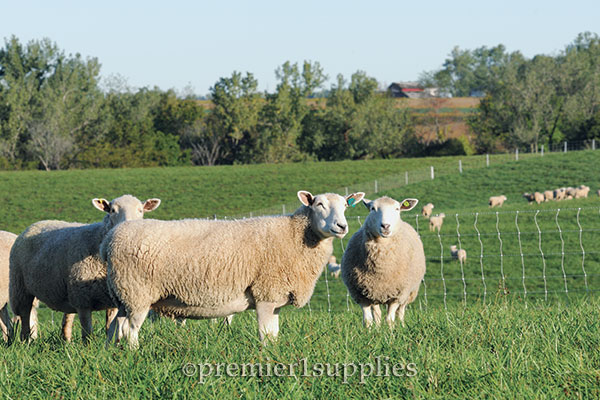
|
|
Daily or weekly (temporary/portable)
Temporary or portable fences are quick to install and remove. To eliminate the need for large corner posts, the fence strands (whether single, multiple or a mesh/netting) must be only hand-tensioned. And they must be electrified properly.
|
| |
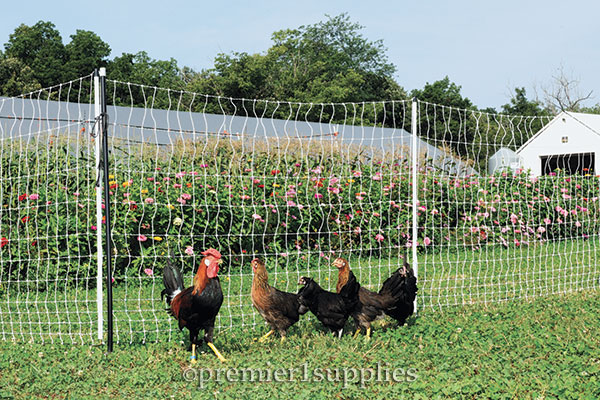
|
|
Moved each season or less (semi-permanent)
Can be an interim barrier until a more permanent fence is installed. This allows folks to field-test fence and gate locations to see what works best. Usually consists of electrified net or multiple electrified strands under low tension—supported by stronger/thicker posts than temporary fences. Will need more maintenance attention than permanent fences.
|
| |
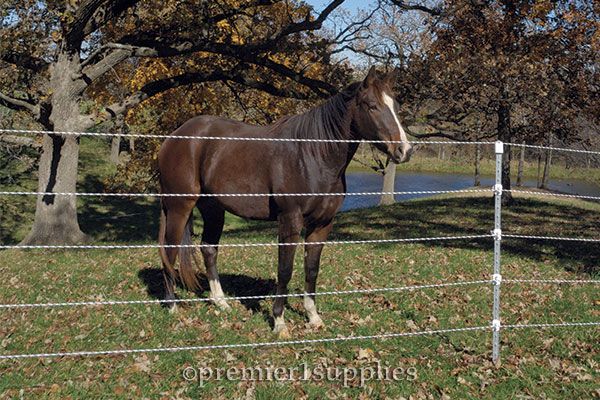
|
|
Never moved (permanent)
For boundary and subdivision fences for land that’s owned by the user—and whose usage is not likely to change. Requires strong wood, steel or fiberglass posts that support high-tensile wires, woven wire, rope or wide tape—of which one or more strands are electrified. More reliable than other options but more expensive to install.
|
| |
2. Why doesn't my net fence work?
Our first instinct is to ask, "What is the voltage?" The best way to determine this is with a fence tester. Readings below 3000V are of concern: Check for grass contact, metal touching the conductors or a conductor wrapped around a fence post spike. The next step would be to test the energizer to make sure it's functional:
- Turn off the energizer.
- Disconnect ground wire and the fence wire.
- Turn the energizer back on.
- With a fence tester, put the ground probe (or clamp) to the ground terminal on the energizer and the metal loop (or positive clamp) at the top of the tester to the fence/positive terminal. The reading you get tells you how well the energizer is working without any other variables. If there is a very low voltage (under 4000V) or no voltage, then the energizer may have a problem. If the voltage is high (greater than 4000V) then the trouble lies with your fence.
|
|
|
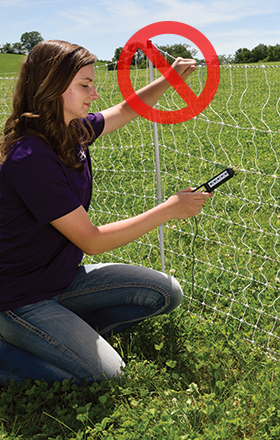
| DON'T—test netting in the middle |
| The probe will have poor contact with the conductive filaments, thus a poor reading. Unfortunately this causes some users to “test” the fence themselves. |
|
|
|
|
|
| |
3. What's better, single or double spike netting?
In most cases, single spikes are all that is needed. If you have soft soils, posts with double spikes provide added stability and can be stepped into the soil more easily. For hard, dense soils, use drivable posts (not shown) which can be driven into the soil with a mallet.
|
| |
|
|
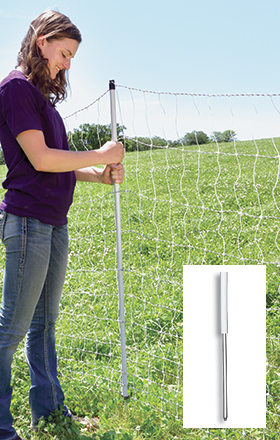
| Single Spike (SS)
|
| Pushes easily into soft soils, some effort in harder soils. Pull out easier than double spike when moving fence. Our preferred spike when using multiple rolls (fewer lbs.) |
|
|
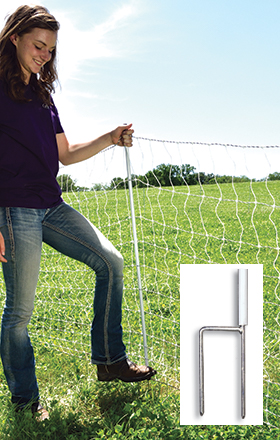
| Double Spike (DS)
|
| Double spike posts easily step into soft and semi hard soils. Increased chance of catching a conductive strand beneath the spike, be watchful. Manageable if moving one or two rolls. |
|
|
|
|
|
| |
| |
| |
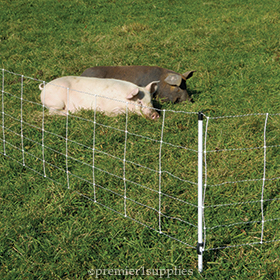
|
| |
|
Pig QuikFence® 6/30/12
|
| |
|
A portable electric fence designed to keep "free range" pastured pigs in. Allows pigs to forage gardens, orchards and fields after harvest.
|
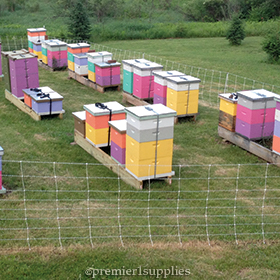
|
| |
|
Bear QuikFence® 12/35/12
|
| |
|
Stop thieving bears from destroying your broods, hives and honey crop. Equipped with a tall-grass disconnect to reduce weed drain in tall grasses.
|
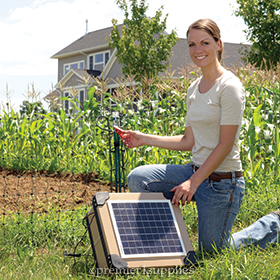
|
| |
|
VersaNet® Plus 11/30/3
|
| |
|
Stop small critters from pruning the patch and ruining your harvest. Effective for raccoons, woodchucks, small dogs, rabbits and skunks.
|
|
|
| |
|
|
|

|
Questions? Call Us.
800-282-6631
Local: 319-653-7622
Fax: 800-346-7992 or 319-653-6304
|
|
|
Business Hours:
Monday - Friday: 7 am - 5:30 pm CT
(January - December)
Saturday: 8am - 12 noon CT (March - September) and Closed (October - February)
Sunday: Closed
© Copyright 2016 Premier1Supplies
2031 300th Street, Washington, Iowa 52353
Contact Us
|
|
|
|
|
|
| |
